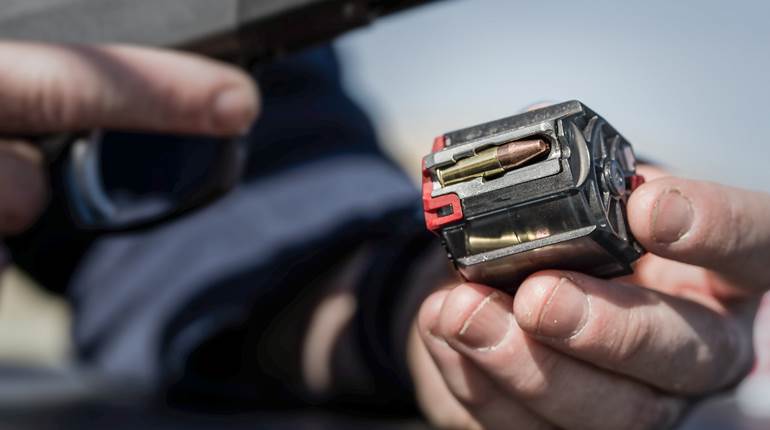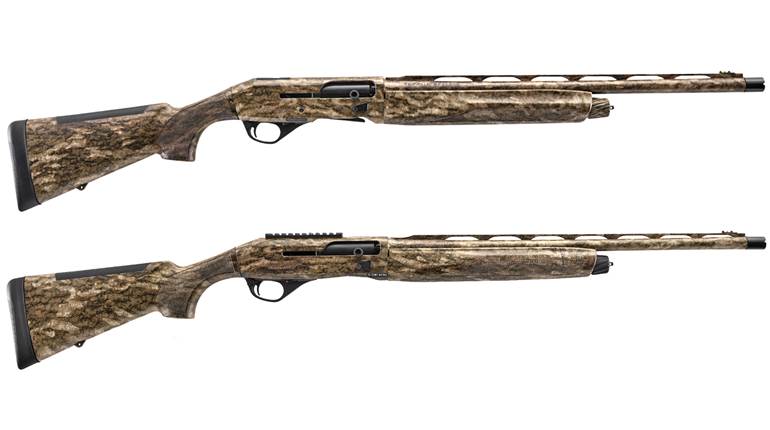
Recently, a buddy called me and asked if I would check out his Ruger 10/22. It was “jamming,” as he described it. That seemed strange because 10/22s are famous for being reliable. When he brought it over, the problem was obvious: The rifle had not been cleaned in a long time—perhaps ever. My buddy is far from being a gun guy. A firearm means no more to him than a hammer does to a carpenter. He needs it to dispatch vermin around his place or put meat on the table, but maintaining it is a concept vacant from his wheelhouse.
Today’s shooters—as have most for more than a century—are in love with rimfire firearms, except for this buddy. They are relatively quiet, have little to no recoil, are quite accurate and relatively cheap to shoot. Each year, well more than a million rimfire cartridges are expended. With the many rounds sent downrange, problems are bound to occur. Whether you are a plinker, a small-game hunter or sophisticated target shooter, keeping your firearm running is a top priority—or it should be. Here are a few tips on keeping your rimfire gun running.
Cleanliness is next to Godliness
That may seem to be an antiquated idea, but it is a fact that clean guns function more reliably than dirty guns. However, as blasphemous as it may seem, too much cleanliness can shorten the life of your firearm. Let me explain.
There is a notion held over from the past that guns and gun barrels must be scrupulously cleaned after every shooting session. In the days of blackpowder and corrosive primers, that was a truism. Even today, blackpowder shooters are wise to clean their firearms after a shooting session. The residue from combusted blackpowder is hydrophilic, meaning that it attracts water and in the case of the blackpowder residue, it can literally suck it out of the air. The same is true for shooting cartridges loaded with corrosive primers. The residue left behind from those primers are salts—mostly potassium chloride—and they attract moisture, thus setting up an environment for corrosion in the barrel. This is why so many barrels from older guns are pitted to some extent. Today, however, modern primers and powders are generally non-corrosive, unless you are in a very humid climate.
A lot of shooters have discovered that their favorite gun does not require a thorough cleaning each time it is used. Modern barrels—most are made from 4140 chrome-moly for blued barrels; stainless steel for others—can maintain their accuracy for several hundred rounds without cleaning. Cleaning, if not done properly, can actually accelerate the wear on a barrel, thus stealing some life from it. The smaller the bore, the more likely it is to do damage to the barrel. Since most rimfires are smaller bores—.22 and .17 cal.—over-cleaning the bore can be a real issue. The risk comes from cleaning rods that can flex and thereby scrape the internal surface of the barrel. Using eyes instead of a properly fitted jag and worn brushes that use twisted steel to retain the bronze bristles combined with a zealous arm behind it has worn out many a barrel. Consequently, many shooters do not clean their barrels until they see a decay in accuracy.
Those who live or shoot in humid environments will probably need to clean their barrels more often than those in dryer climes. The residue from shooting can have microscopic fissures in it so that the effects of humidity are enhanced. Their barrel-cleaning schedule will be determined by trial and error. If you shoot and then wait a week to clean, and see evidence of rust on the cleaning patches, then a more rigorous schedule must be worked out.
But there’s more
Of course, there is more to gun cleaning than just the barrel. The breech section of the gun is subject to fouling as well, and this can be critical to keeping the gun functioning.
Rimfire ammunition is notoriously filthy. It leaves behind a lot of crud. Don’t believe me? Take a piece of cardstock and place it within 6" of the muzzle. Fire the gun and notice all the crud around the bullet hole. Some of that crud doesn’t get blown out of the barrel, so guess where it collects—in the receiver, along with the operational components. That area needs more regular attention, whether it is a break-open single shot or a fast-firing semi-automatic.
Shooters all have their preferred method of dealing with this fouling, and the details may vary a bit. My preferred method is to spray the hell out of the fouled area with brake cleaner, a product available at most automobile service stores. Brake cleaner is a solvent under a bit more pressure than most aerosol cans that easily loosens the fouling and blows most of it out of the gun. This means that cleaning the gun on your kitchen table—at least this part of the cleaning—won’t be welcome by anyone else sharing that table for dining. Take it outside, and be sure to use goggles or a face shield to protect your eyes. Don’t ask me how I know this, but I can assure you that you do not want to find out why first hand. One more caveat: Be careful about using brake cleaner with plastic—the current buzz word is “composite”—parts. The solvent may attack some composites and either pit them or dissolve them. If your gun has plastic in or around the breech, you will have to use traditional solvents and rags unless you have a source of compressed air.
Slip sliding away
Another old-school saw says that lubricating a firearm is not necessary unless you live in a humid environment. This is a holdover from the days of petroleum-based lubricants that were viscous and low in volatility. The worry was that the lubricant would attract dust and grime from the outside and foul-up the gun. Again modern technology has come to the rescue. Too, an increase in knowledge, hence maintenance practices, has pretty well negated this argument.
Fact is, components that slide together to make something—in the case guns—operate correctly requires some lubrication. There are generally two schools of thought regarding lubrication. The lazy, “I got no time for fancy stuff,” group takes a spray can of whatever is claimed as gun oil and sprays everything until it is dripping, then puts the gun away. There is, however, a better way. 
Many gun oils are available in a squeeze bottle with a rotating delivery tip. It doesn’t take that much more time to carefully apply a drop or two—sometimes more, depending on the individual firearm—and gently wipe off the excess with a rag. Not only do you not have to deal with the gun leaking the stuff everywhere, but you don’t leave excess lubricant in some place on the gun that would attract dust and grime, negating its reliability. It does not necessarily mean dismantling the firearm; most of the time it can be done with the gun assembled. In rare cases where lubricant must be sort of surgically inserted, an old hypodermic syringe is handy. A Q-tip, a.k.a. cotton swab, for cleaning, as well as lubrication, is also a handy item in your gun maintenance kit.
The spray can is not a complete no-no. I usually have a can with me at my range or a competition for emergency cleaning and lubrication when there is not an opportunity to tear into a gun. Sometimes just spraying the gun’s action, shaking out and wiping off the excess can mean the ability to stay out at the range or complete the match.
Now here’s a tip not often publicized: Lubricating your ammo can go a long way toward keeping your rimfire running. But before you go and dip your ammo in a can of oil, let me explain. You must be very careful about lubricants that touch your ammunition. Many fine gun lubricants have the ability to creep into every nook and cranny. This can be a good thing when working on your gun, but if it creeps into a cartridge, it can cause the cartridge not to fire.
There are, however, dry lubricants that when carefully applied can enhance the reliability of your rimfire. This mostly applies to semi-automatics, but I now try to lube all my rimfire ammo. Here’s the safe way to do it: ![]()
You’ll need a cloth—I use an old silicone gun cloth that I keep in a zip-lock bag just for this purpose—a can of dry silicone lubricant and ammo that is already clean. By clean, I mean that old, cruddy ammo kept in a box or jar won’t work. Fresh ammo in its original packaging is what you should be using. Lay the cloth out on a suitable surface and spray it with the dry lube. This is important: Wait until it dries. Place a given amount—I usually grab a good handful of ammo, say, 50 rounds—onto the cloth. Carefully bring up the edges until it resembles a loose pouch. Shake and roll the ammo around the cloth to ensure each cartridge gets lubed. You can either put these rounds back in the box for use or load up a magazine(s) directly from the cloth. It is surprising how effective this is in slicking up the feeding and extraction of your gun.
A dry silicone lube is the best. The reason you wait until it dries on the cloth is to ensure the lube cannot creep into the cartridge.
Another good use for dry lube is your magazines. Especially with blowback semi-automatics, the area around the top of the magazine can get caked in crud. And again a caveat: Be careful when using aggressive solvents like brake cleaner with plastic magazines. You might spray a bit of it on a rag, and test it on a non-critical and unobtrusive part of the magazine. The same is true with dry lube. Make sure the solvent isn’t going to screw up your plastic magazine.
I asked my buddy if his rifle was still accurate. “How the hell would I know?” he replied, “It still hits rabbits.” So I left the barrel alone. I removed the action from the stock and sprayed the receiver liberally with brake cleaner. While it was dripping, I hit it with a few blasts from my air hose. Then I hit the areas where the bolt rides in the receiver with a few drops of Ballistol. I also cleaned up the magazine and hit it with some dry lube. Bingo! The rifle was running as good as new again. Total time: about 10 minutes.





































